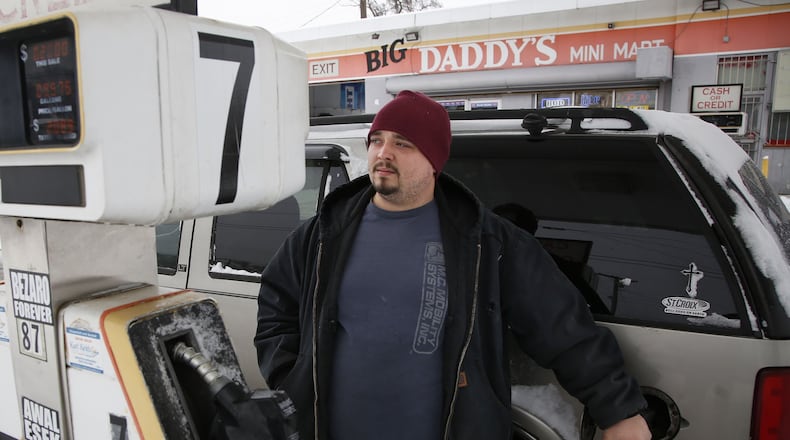The state could charge a new tax for road and infrastructure work — perhaps $100 per car and more for trucks, Coley said.
The idea would be to have everyone pre-pay that amount when they register vehicles. Coley said there could be a waiver in some cases for indigent motorists.
Ohio residents would receive a card or QR code to show they have already paid the tax. Coley said he is open to suggestions on how best to arrange “the physical mechanics” of the arrangement.
“We understand the problem,” the Butler County Republican said. “It’s getting more and more expensive to build roads, and cars are using less gasoline.”
The state can no longer be wedded to what he called a “pennies-per-gallon” revenue model.
“It is no tax increase. It’s just a shift … We’re now assessing it to everybody,” Coley said.
In a recent interview, Butler cautioned that the idea is one of many being considered.
“This is just one of many different solutions that we’re looking at, where we’re going to ensure we’re going to get the resources necessary to make sure our roads and bridges … are properly maintained,” Butler said. “We need to do that.”
The bottom line, state leaders believe: Ohio’s transportation budget is greatly diminished, and the state needs new money for road projects.
The state’s roads budget had been supported in recent years by a $1.5 billion in turnpike bond funding that has now run out.
“Doing nothing is not fair,” Coley said.
A 15-member state committee is tasked with giving Ohio Gov. Mike DeWine options on bolstering funding for major infrastructure work.
“Ohio is at a huge disparity from most of its neighbors … if Ohioans want better roads, better bridges, better infrastructure, they’re going to have to pay for it,” said Patrick DeHaan, head of petroleum analysis at GasBuddy.com.
It has been more than a decade since Ohio’s gas tax was increased. Inflation has diminished that tax’s value in the year’s since.
The legislature last raised the motor fuel tax in 2003, when lawmakers voted to phase in a three-year, six-cent increase, raising the rate from 22 cents per gallon to 28 cents in 2005.
Ohio’s gas tax rate now ranks 29th among all states and the District of Columbia, according to the Greater Ohio Policy Center.
Michigan’s gas tax was 44.1 cents as of July 2018, according to the Tax Foundation, an independent tax policy non-profit. Indiana’s gas tax stood at 42.9 cents. West Virginia was at 35.7 cents and Pennsylvania’s was 38.7 cents.
Of border states, only Kentucky’s tax was lower, at 26 cents, according to the Tax Foundation.
But DeHaan is skeptical that a card mechanism would work.
“That’s a monumental undertaking,” he said. “The first thing I think is the complexity behind getting such a card to work in every station in Ohio.”
Statewide loyalty or rewards cards will need to work with technology at thousands of different gas stations, DeHaan said. And taxing only non-state residents may motivate them simply to stay out of Ohio, he added.
“It sounds terrific to me in theory,” he said. “But that’s where the ‘terrific’ portion of the idea ends. Undertaking this is going to be next to impossible.”
About the Author

